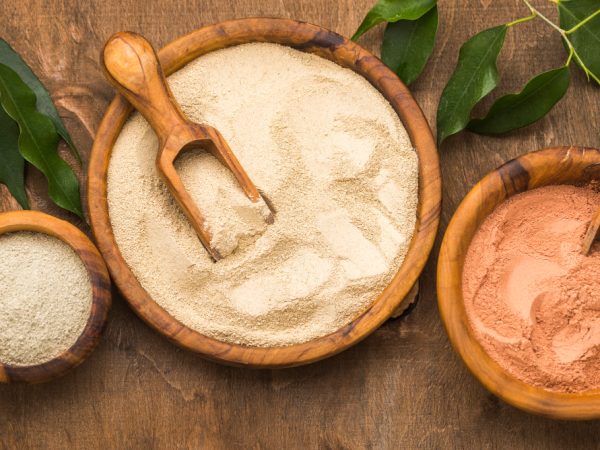Chye Poh: A Salty-Sweet Delight in Asian Cooking
Chye poh (also spelled chai poh, 菜脯) is a type of preserved radish widely used in Chinese and Southeast Asian cuisine. It is especially beloved in countries like Singapore, Malaysia, and Thailand, where it forms the base of many beloved dishes.
Made from daikon radish, chye poh is typically salted and dried, then either left in its salty form or sweetened with sugar, resulting in two main varieties: salty chye poh and sweet chye poh. Its distinct crunchy texture and intense umami flavor make it an ideal ingredient for flavoring omelettes, stir-fries, and congee.
Chye poh’s simplicity belies its versatility, making it a humble yet powerful addition to any Asian pantry.
A Brief History of Chye Poh
Chye poh traces its roots back to ancient Chinese preservation techniques, where vegetables were often salted and dried to extend their shelf life before the advent of refrigeration. Over time, the process evolved into a culinary art form.
This preserved radish became popular among Teochew, Hokkien, and Cantonese communities, who brought it to Southeast Asia during waves of migration. There, it took on new identities, with local interpretations and uses blending into Singaporean, Peranakan, Thai, and Malaysian cooking traditions.
Today, chye poh remains a staple in hawker culture and home kitchens alike, symbolizing comfort, tradition, and flavor economy.
Varieties of Chye Poh: Salty vs. Sweet
Understanding the different types of chye poh is key to cooking with it properly.
Salty Chye Poh:
- Appearance: Pale beige or yellowish
- Texture: Crunchy and firm
- Flavor: Boldly salty and slightly fermented
- Use: Best for cooking dishes where it will be rinsed or stir-fried
Sweet Chye Poh:
- Appearance: Darker, often caramel brown
- Texture: Softer but still chewy
- Flavor: Sweet-salty balance with a mellow undertone
- Use: Ideal for topping congee or adding to omelettes without pre-soaking
Many cooks rinse or soak salty chye poh before cooking to moderate the saltiness. Sweet versions are typically used straight from the jar or pack.
How Chye Poh is Made
Making chye poh at home is surprisingly simple and involves just a few ingredients and patience.
Basic Ingredients:
- Fresh daikon radish
- Salt
- Optional: sugar (for sweet version)
Steps:
- Wash and peel daikon radish.
- Julienne or shred the radish into fine strips.
- Salt the radish, then mix thoroughly and place in a container for several hours to draw out moisture.
- Sun-dry or dehydrate the salted radish until it becomes chewy and lightly shriveled.
- For sweet chye poh, cook with sugar in a pan until caramelized.
Homemade chye poh can be stored in an airtight container in the fridge and used for weeks. While store-bought versions are convenient, making your own allows you to control salt and sugar content.
Culinary Uses of Chye Poh
Chye poh is treasured for its ability to transform simple dishes into flavor-packed meals. Here are the most popular ways it’s used:
1. Chye Poh Neng (菜脯蛋 / Preserved Radish Omelette):
A Singaporean classic made by mixing chopped chye poh into beaten eggs, often seasoned with soy sauce and white pepper. It’s crispy on the outside and soft inside, bursting with umami.
2. Topping for Teochew Porridge or Congee:
Sweet chye poh is often served as a condiment on warm rice porridge. It provides texture and flavor contrast to the smooth, bland congee.
3. Stir-Fries & Noodles:
Chopped chye poh can be stir-fried with garlic and added to noodles or vegetables. It adds a savory-sweet punch, especially when combined with chili or dried shrimp.
4. Radish Cake (Chai Tow Kway):
One of the main flavoring agents in this popular hawker dish made with rice flour and daikon radish. The crispy fried version of radish cake is tossed with eggs, garlic, and—you guessed it—chye poh.
5. Steamed Dishes:
Some Chinese-style steamed minced meat or tofu dishes use chye poh as a topping, giving them added depth and a crunchy counterpoint.
Nutritional Value and Health Considerations
Chye poh, made from radish, retains some of the fiber and micronutrients of the original vegetable. However, due to the high salt or sugar content, it’s best used in moderation.
Nutritional Highlights:
- Low in calories
- Rich in flavor-enhancing compounds
- High in sodium (especially salty versions)
- Contains small amounts of potassium and vitamin C
Tip: If you’re watching your sodium intake, rinse or soak salty chye poh in warm water and squeeze out excess liquid before cooking.
Where to Buy Chye Poh and Storage Tips
Chye poh is readily available across Asian grocery stores, wet markets, and supermarkets in Southeast Asia. If you’re abroad, try Chinese supermarkets or online Asian food retailers.
Popular Brands:
- Woh Hup
- Kwong Cheong Thye
- Tai Hua
Storage Tips:
- Keep it in an airtight jar in the fridge once opened
- Homemade chye poh should be refrigerated and consumed within 3–4 weeks
- Always use clean utensils to avoid contamination
Sweet chye poh lasts slightly longer due to the sugar’s preservative nature, while salty versions are more prone to fermentation if not stored properly.
Conclusion
Chye poh is a testament to the power of preservation in creating deep, lasting flavor. From the humble omelette to festive radish cakes, this salty-sweet condiment has earned its place in the hearts—and kitchens—of millions.
Whether you’re exploring traditional Teochew recipes or experimenting with fusion cuisine, chye poh adds crunch, umami, and personality. It’s more than a side note; it’s the secret ingredient that brings dishes to life.
As with many traditional foods, chye poh embodies the philosophy of making the most out of simple ingredients—something that resonates across cultures and cuisines.
FAQs
1. Can I eat chye poh straight out of the packet?
Yes, sweet chye poh can be eaten straight away. Salty versions are often too strong and should be rinsed or cooked before eating.
2. Is chye poh vegetarian or vegan?
Yes. Traditional chye poh contains only radish, salt, and possibly sugar. However, always check packaging, especially for flavored variants.
3. How do I reduce the saltiness of chye poh?
Soak it in warm water for 10–15 minutes, then rinse and squeeze dry. You can repeat the process if needed.
4. What’s the difference between chye poh and pickled radish?
Pickled radish is usually soaked in vinegar and sugar, giving it a tangy taste. Chye poh is salt-preserved and dried, resulting in a savory profile.
5. Can I make chye poh at home?
Yes! All you need is daikon radish, salt, sunlight (or a dehydrator), and optional sugar. It’s a rewarding and customizable process.
Also read: Kitchen cupboard paint before and after: 10 Stunning Transformations That Will Amaze You











